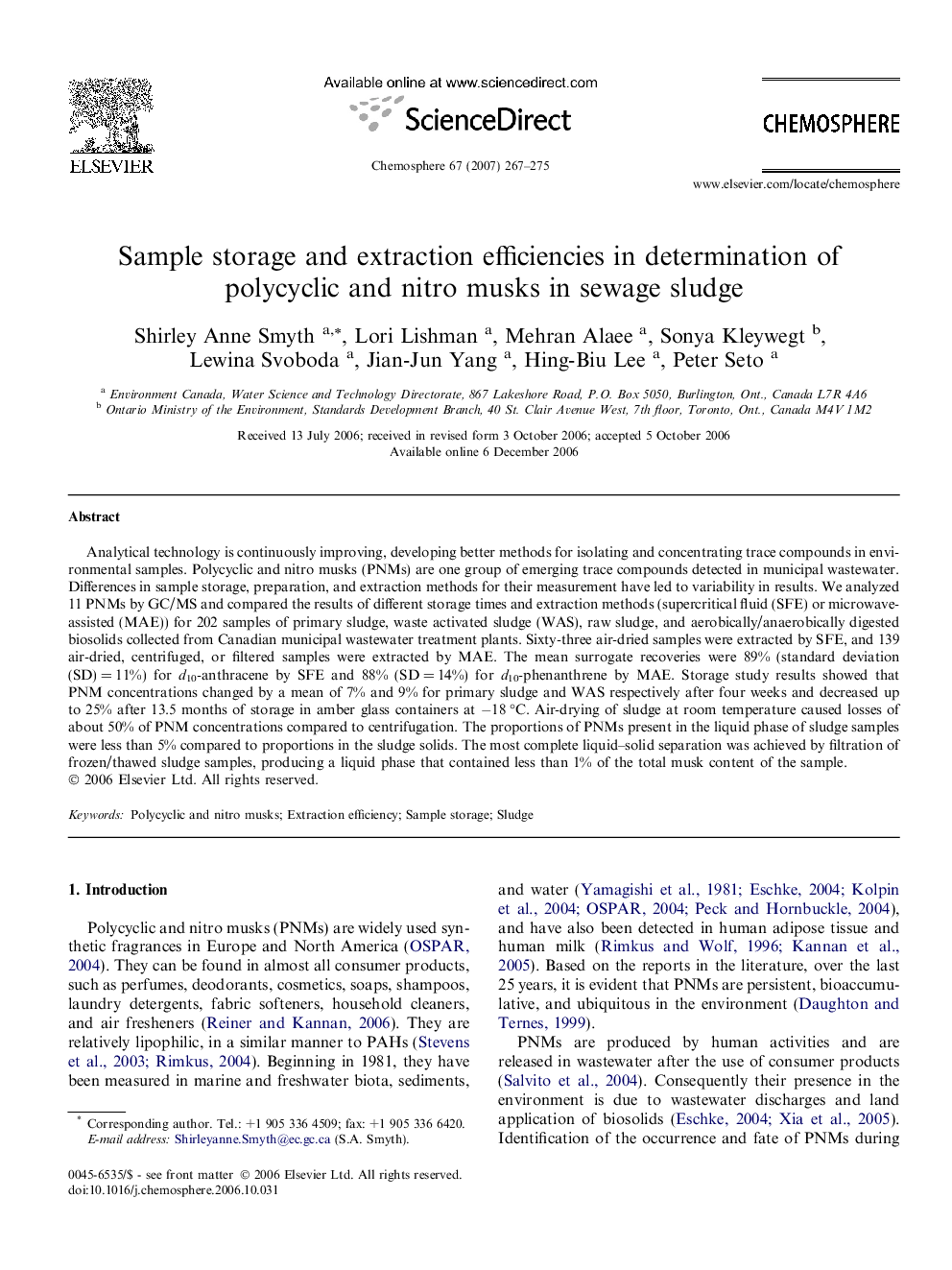| Article ID | Journal | Published Year | Pages | File Type |
|---|---|---|---|---|
| 4415619 | Chemosphere | 2007 | 9 Pages |
Analytical technology is continuously improving, developing better methods for isolating and concentrating trace compounds in environmental samples. Polycyclic and nitro musks (PNMs) are one group of emerging trace compounds detected in municipal wastewater. Differences in sample storage, preparation, and extraction methods for their measurement have led to variability in results. We analyzed 11 PNMs by GC/MS and compared the results of different storage times and extraction methods (supercritical fluid (SFE) or microwave-assisted (MAE)) for 202 samples of primary sludge, waste activated sludge (WAS), raw sludge, and aerobically/anaerobically digested biosolids collected from Canadian municipal wastewater treatment plants. Sixty-three air-dried samples were extracted by SFE, and 139 air-dried, centrifuged, or filtered samples were extracted by MAE. The mean surrogate recoveries were 89% (standard deviation (SD) = 11%) for d10-anthracene by SFE and 88% (SD = 14%) for d10-phenanthrene by MAE. Storage study results showed that PNM concentrations changed by a mean of 7% and 9% for primary sludge and WAS respectively after four weeks and decreased up to 25% after 13.5 months of storage in amber glass containers at −18 °C. Air-drying of sludge at room temperature caused losses of about 50% of PNM concentrations compared to centrifugation. The proportions of PNMs present in the liquid phase of sludge samples were less than 5% compared to proportions in the sludge solids. The most complete liquid–solid separation was achieved by filtration of frozen/thawed sludge samples, producing a liquid phase that contained less than 1% of the total musk content of the sample.
